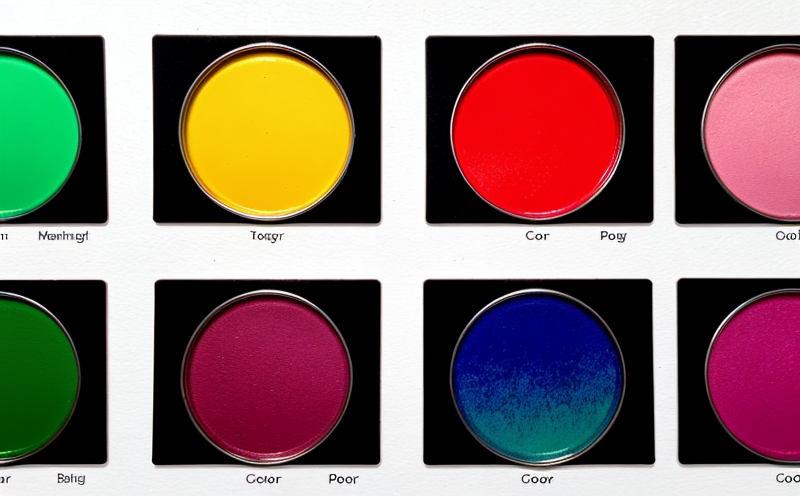EN 13032-1 Colorimetric and Spectral Testing of Lamps and Luminaires
The European Standard EN 13032-1 defines the requirements for colorimetric and spectral testing of lamps and luminaires. This standard is essential for ensuring that lighting products meet specific performance criteria, particularly in terms of their color rendering properties and how they emit light across different wavelengths.
Colorimetry involves measuring the color characteristics of a light source using three parameters: x, y, and z coordinates on the CIE chromaticity diagram. Spectroscopy measures the intensity distribution of light at each wavelength within a specific range. These measurements are critical for evaluating how accurately and comprehensively a lighting product can render colors in various environments.
The standard is widely recognized across Europe and many other parts of the world, ensuring that products adhere to international quality benchmarks. Compliance with EN 13032-1 not only enhances the reputation of manufacturers but also ensures consistent performance across different applications.
Testing laboratories specializing in this area typically use advanced spectrophotometers capable of measuring light at nanometer intervals, providing precise data points for analysis. This level of detail is crucial for meeting the stringent requirements set forth by EN 13032-1 and other relevant standards like ANSI C78.37.
Proper specimen preparation is also vital in ensuring accurate results. Samples must be handled with care to avoid any external factors that could affect their colorimetric properties, such as temperature variations or exposure to light before testing. Additionally, the environment where tests are conducted should mimic real-world conditions as closely as possible.
The process of conducting these tests involves several steps. First, samples are selected based on specific criteria relevant to the type of lamp or luminaire being tested. Then, they undergo rigorous calibration procedures using reference standards provided by reputable organizations such as NIST (National Institute of Standards and Technology).
Once calibrated, actual testing can begin. This includes placing each sample into a spectrophotometer designed specifically for colorimetric and spectral analysis. During measurement, the instrument captures data on both color coordinates and wavelength distribution.
After completing all measurements, raw data is processed using specialized software that calculates various metrics including CRI (Color Rendering Index) values and correlated color temperatures (CCT). These calculations help determine whether a given product meets specified standards for accurate color representation under different lighting conditions.
In addition to these technical aspects, there are also considerations regarding the practical application of this testing. For instance, understanding how well a particular type of lamp performs in specific environments can influence decisions about its use within certain sectors like retail stores or museums where precise color reproduction is important.
Another key consideration is ensuring that results obtained from EN 13032-1 compliant laboratories are accepted internationally. Many countries have adopted this standard as a means of harmonizing quality across borders, making it easier for businesses to comply with global regulations and standards.
Industry Applications
The importance of colorimetric and spectral testing cannot be overstated in industries reliant on accurate light reproduction. Retailers, for example, often require precise color rendering to present products attractively to customers. In museums and galleries, proper lighting is crucial for preserving artifacts while still allowing visitors to view them clearly.
- Museums: Ensuring that artwork is displayed under lights that accurately represent their true colors helps preserve the integrity of historical pieces over time.
- Retail: Accurate color rendering in store lighting can enhance customer experience and improve sales by making products appear more appealing.
- Architectural Design: Architects may need to specify particular types of lamps or luminaires based on their colorimetric properties for specific projects.
In addition to these sectors, many research institutions also utilize this testing method. Universities conducting lighting studies often rely on accurate data provided by EN 13032-1 compliant laboratories to support their findings and recommendations.
Quality and Reliability Assurance
Compliance with EN 13032-1 plays a significant role in maintaining high standards of quality and reliability within the lighting industry. By adhering to this standard, manufacturers demonstrate their commitment to producing consistent products that meet international benchmarks.
The rigorous nature of these tests ensures that any discrepancies or issues are identified early on during production processes. This allows companies to address problems before they become widespread, thereby enhancing overall product quality and reducing potential customer complaints or returns.
Furthermore, compliance with this standard provides peace of mind for both manufacturers and consumers alike. Knowing that a product has been tested according to recognized international standards instills confidence in its performance and longevity.
International Acceptance and Recognition
- The European Standard EN 13032-1 is recognized globally, ensuring that products tested meet international quality benchmarks.
- This standard is widely adopted by countries looking to harmonize lighting product specifications across borders.
- Many international organizations accept results from laboratories certified for this type of testing, facilitating easier trade between nations.





